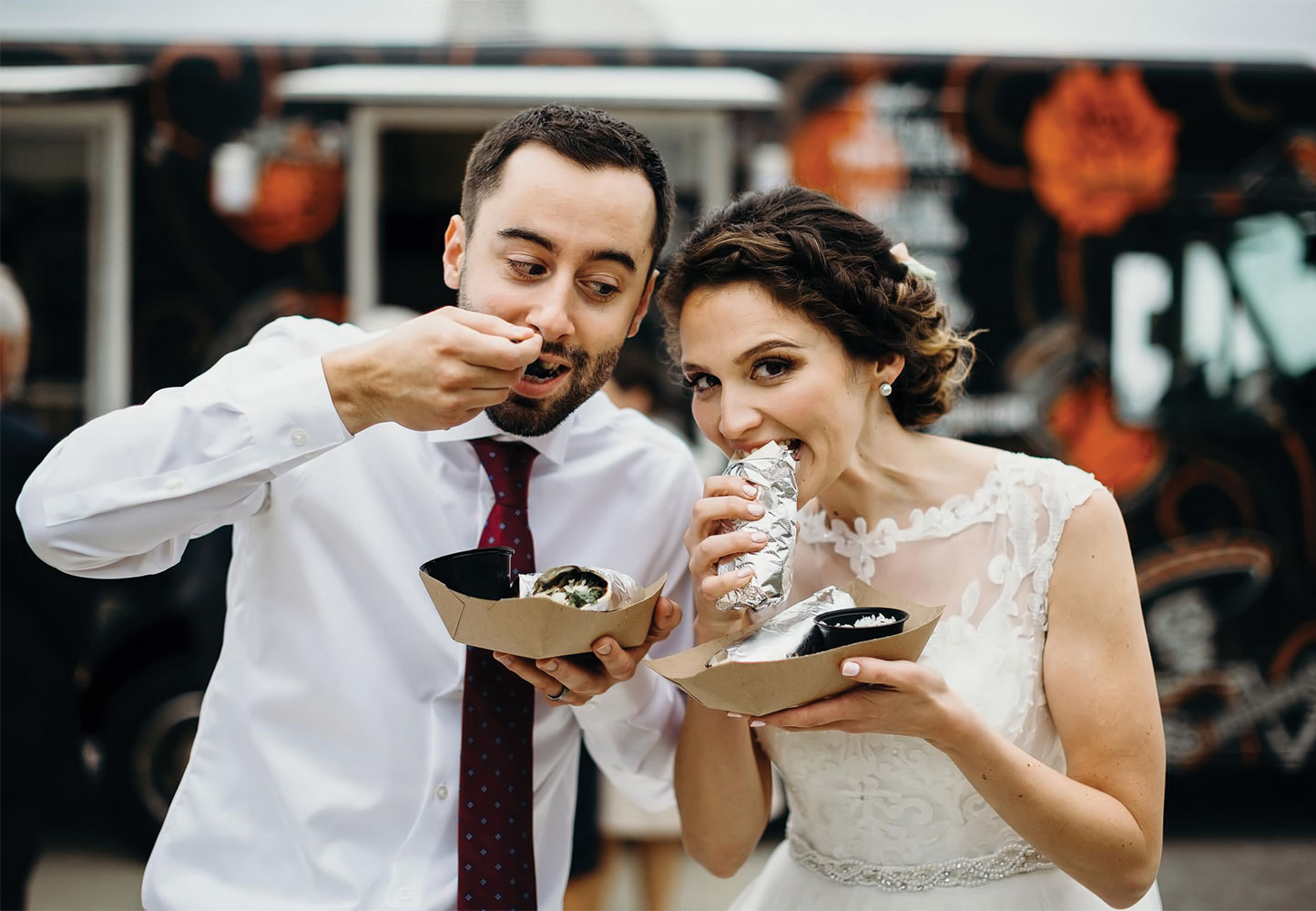When the food-truck trend raced out of the gates back in 2010 and 2011, several factors contributed to its success. One was the trendiness; customers nationwide were clamoring for it as the next big thing. Another was the rise of social media and how it afforded food-truck businesses a tailor-made marketing solution.
And of course there was the fact that food trucks became a platform for endless innovation.
“Food trucks are an easy way for chefs and entrepreneurs to try out new ideas compared to the significant initial investment of starting a restaurant,” says Christian Murcia, founder and co-owner of Crepes Bonaparte, a Southern California–based truck with multiple mobile units and one restaurant location. “A lot of new food styles have been introduced through food trucks that may not have been possible without the lower barriers to entry.”
That’s included everything from Korean barbecue (made famous by Los Angeles chef and food-truck kingpin Roy Choi at Kogi BBQ) to Mexican-soul-food fusion (Blaxican in Atlanta) and Thai tacos (Cucina Zapata in Philadelphia). But it’s also included staples elevated to a mobile-yet-premium status, such as wood-fired pizza (Basic Kneads in Denver), gourmet sliders (Easy Slider in Dallas), and even bacon (The Bacon Truck in Boston). And even though food trucks aren’t as much in the spotlight today as in 2010 and 2011, that innovation continues to accelerate in today’s food-truck culture.
In San Francisco, Curry Up Now aimed to create something new with its Indian food served in burritos, tacos, and quesadillas. Cofounder Akash Kapoor says he and his wife, Rana, along with business partner Amir Hosseini, were inspired by Choi and wanted to similarly offer an underserved food in a familiar format, which they’ve done now through four trucks and six brick-and-mortar locations.
“I believe the American public embraced and encouraged the funky and different food that was being served from a truck format,” Kapoor says. “While the food was familiar in taste, it wasn’t in the presentation. Comfort food was given an altogether different appearance and never-seen-before twist. Food trucks are amazing for innovation, and we’ve actually experimented with this by introducing LTOs to trucks and restaurants at the same time with very different results—skewed to a better acceptance on the trucks.”
One comfort food that’s received some of the most attention in the food-truck space is the grilled-cheese sandwich. From Ms. Cheezious in Miami to Roxy’s Gourmet Grilled Cheese in Boston, and from Toasty Cheese in Chicago to The Grilled Cheeserie in Nashville, Tennessee, many truck brands discovered the power of dishing gooey sandwiches with premium toppings.
Brand spotlight /
Dave Danhi was one of the first to jump onboard the grilled-cheese truck phenomenon, having opened The Grilled Cheese Truck in Los Angeles in 2009. The long-time full-service chef says America was hungry for a street-food culture, and the recession was a great opportunity to launch it. “It was a perfect storm; people go to comfort food when the economy goes to crap,” Danhi says. “They’re trying to save their money, but in L.A., nobody’s cooking, they’re going out to eat. Enter the food truck: You’ve got a date night for $20 and some good wholesome food.”
The Grilled Cheese Truck features upscale sandwiches like the Goat Cheese Melt, the Buffalo Chicken Melt, and the signature Cheesy Mac ’n’ Rib, which consists of sharp cheddar, house-smoked barbecue pork, Southern macaroni and cheese, and caramelized onions.
One of the reasons grilled cheese has thrived in food trucks is because it does not require as much equipment as other cuisines. Danhi says The Grilled Cheese Truck’s menu was cooked from scratch at a prep kitchen, and all the truck needed was a griddle to finish off the assembled sandwiches.
Equipment limitations are a common challenge in trucks, but some operators see those limitations as an opportunity rather than an obstacle.
“Although our truck is custom-built for crepes, most trucks have the same equipment: a small fryer, a flat top, a steam table, and a small deli fridge,” Murcia says. “It forces creativity when trying to make items that would traditionally be made with equipment you don’t have, such as an oven or stovetop pan.”
Of course, that doesn’t mean that truck operators aren’t interested in a traditional kitchen. Many use prep or commissary kitchens to alleviate spacing pressures. And several brands have transitioned from the truck game to brick-and-mortar locations, either running the two in tandem or shutting down the former in favor of the latter. From Bon Me in Boston to Marination in Seattle and Seoul Taco in St. Louis, several trucks have become multiunit fast-casual concepts.
In New Jersey, Oink and Moo BBQ was voted the No. 1 Food Truck in America by The Daily Meal for its house-smoked barbecue, served in pulled-pork and brisket sliders and tacos. It now has one-going-on-two brick-and-mortar locations serving a slightly bigger menu. But the star at both is the baby back ribs, served in the brand’s own house style. “We start with a Memphis-style rub, smoke over hickory, and mop it with a Kansas City–style barbecue sauce,” says cofounder Elisabeth Cowan. “The ribs come with a Carolina-style coleslaw and our scratch-made cornbread.”
One popular food truck, Cleveland’s Barrio Tacos, is a roving offshoot of a full-service concept. The truck features three standard tacos: chicken, chorizo, and black bean. Each has a sweet, tangy, and savory flavor created by combining the protein with a special slaw, sweet corn, queso fresco, and sauce wrapped in a flour tortilla.
“The tacos were inspired by our fans’ favorite build-your-own taco combinations, which are available at Barrio restaurants,” says spokeswoman Jill LeMieux. “Tacos can also be customized for special events, with proteins like Thai-chili tofu, grilled shrimp with chile-lime butter, and braised short rib.”












